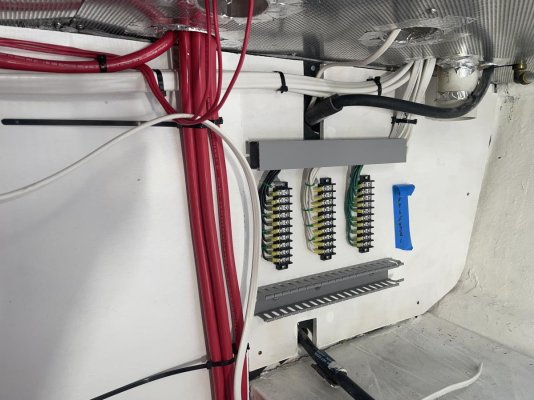TheLake
Veteran Member
- Joined
- Oct 16, 2021
- Messages
- 51
- Vessel Name
- The Lake
- Vessel Make
- 42' CHB Tricabin
Hi all,
I understand that AC wiring and DC wiring shouldn’t be in the Sam conduit. However there doesn’t seem to be any way to avoid them being close together at pinch points and where they need to cross over each other.
In my picture the terminal strips hold the circuits for AC. On the right side are all the circuit wires going up to the breakers. I want to have some of my AC wiring going to the outlets go down the left side. But that is where the main battery cables and starter cables that run to the panel are. Is it ok for them to be beside them for that little bit? About 18”?
There will be places where the wires have to cross or come together at pinch points (eg, the single conduit going to the fly bridge.)
Thoughts?
Chris
I understand that AC wiring and DC wiring shouldn’t be in the Sam conduit. However there doesn’t seem to be any way to avoid them being close together at pinch points and where they need to cross over each other.
In my picture the terminal strips hold the circuits for AC. On the right side are all the circuit wires going up to the breakers. I want to have some of my AC wiring going to the outlets go down the left side. But that is where the main battery cables and starter cables that run to the panel are. Is it ok for them to be beside them for that little bit? About 18”?
There will be places where the wires have to cross or come together at pinch points (eg, the single conduit going to the fly bridge.)
Thoughts?
Chris

